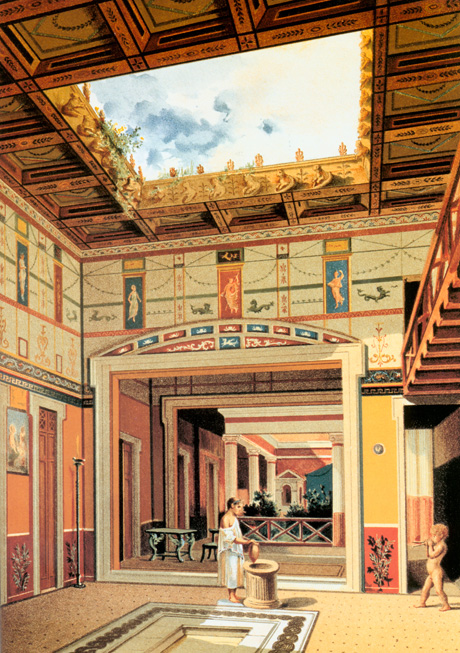
Pliny’s concerns regarding domestically located wall-painting
Ironically, just a few decades before the wall-paintings at Pompeii and Herculaneum suffered their cataclysmic fate, the historian Pliny the Elder wrote deploring the increasing trend towards commissioning wall-paintings for private residencies. His concerns stemmed from their lack of public accessibility and the fact that private houses were prone to catching fire. He argued that movable paintings could be saved, whilst wall-paintings would be destroyed along with the house. Had the paintings been commissioned for purely interior-design reasons one wonders if he would have been quite so concerned? The underlying motivation for his disapproval concerning their increasing appearance in the private sphere was probably due to political idealism, or at least the vestiges of it, since those still harbouring Republican sentiments believed that art should be publicly displayed for the edification of all citizens.
"But as for fame, that has been reserved solely for the artists who have painted pictures; a thing that gives us all the more reason to venerate the prudence displayed by the men of ancient times. For with them, it was not the practice to decorate the walls of houses, for the gratification of the owners only; nor did they lavish all their resources upon a dwelling which must of necessity always remain a fixture in one spot, and admits of no removal in case of conflagration. Protogenes was content with a cottage in his little garden; Apelles had no paintings on the plaster of his walls; it not being the fashion in their day to colour the party-walls of houses from top to bottom. With all those artists, art was ever watchful for the benefit of whole cities only, and in those times a painter was regarded as the common property of all." (Natural History, book 35, ch. 37, John Bostock, H.T. Riley, Ed. 1855, Perseus Digital Library, Tufts University.)
The 5th-century Greek painter Agatharchus seems to have shared Pliny’s views on egalitarianism versus fame, because he had to be locked in the house of Alcibiades and threatened with permanent incarceration if he did not produced wall-paintings for its interior. (Plutarch, Alcibiades, XVI, 4, Andocides, IV, 17.)
Inward Outward Viewing Axis
In addition to emphasising the inward and outward orientation of the house, views into and within the house were also carefully orchestrated. For example, it was not uncommon for the lararium or family shrine, to be aligned on an axis with the fauces thus making it visible to passers by and those entering. Generally speaking, views that penetrated deep into the house were carefully orchestrated and defined by either a prized object, sculpture or wall-painting. The Casa del Poeta Tragico exemplifies the way in which wall-paintings can achieve psychologically dramatic effects as a direct result of strategic spatial positioning. This theme is explored with many insightful observations in Bettina Bergmann's essay "The Roman House as Memory Theatre: The House of the Tragic Poet in Pompeii". (Art Bulletin, 76, 1994.)
Pliny the Elder, who lived in the countryside across the bay from Pompeii, made it abundantly clear that architectonic openings should be located in such a way as to provide the perfect frame through which nature could be viewed.

|